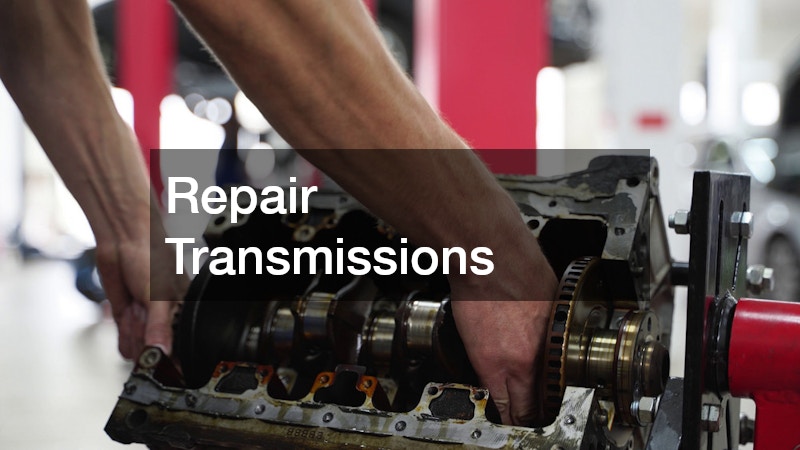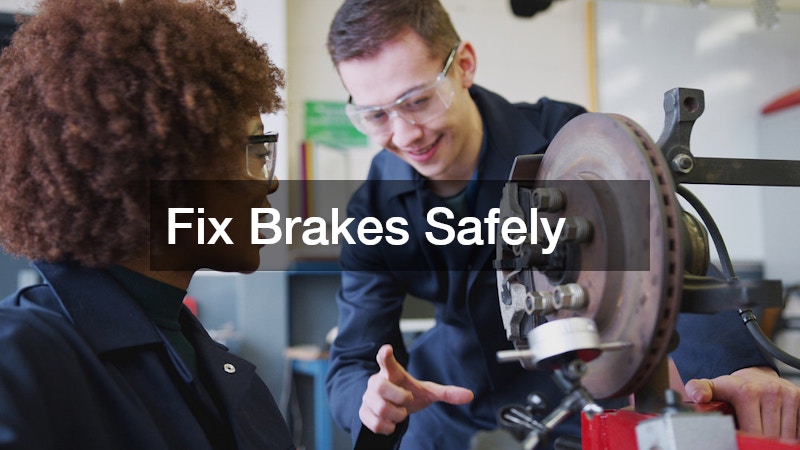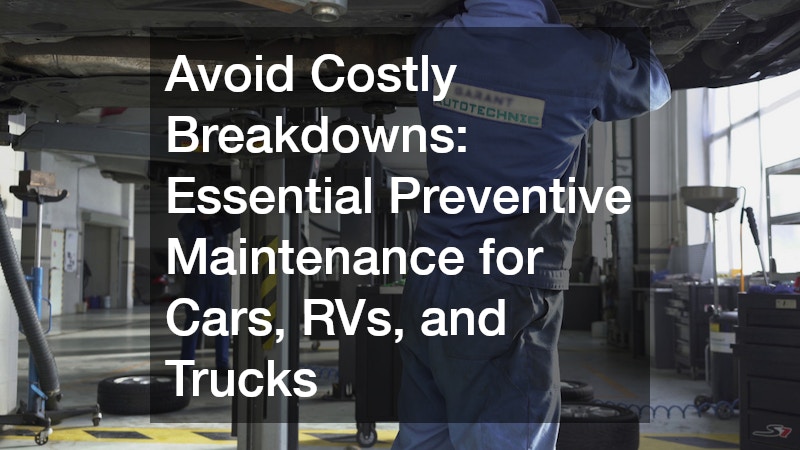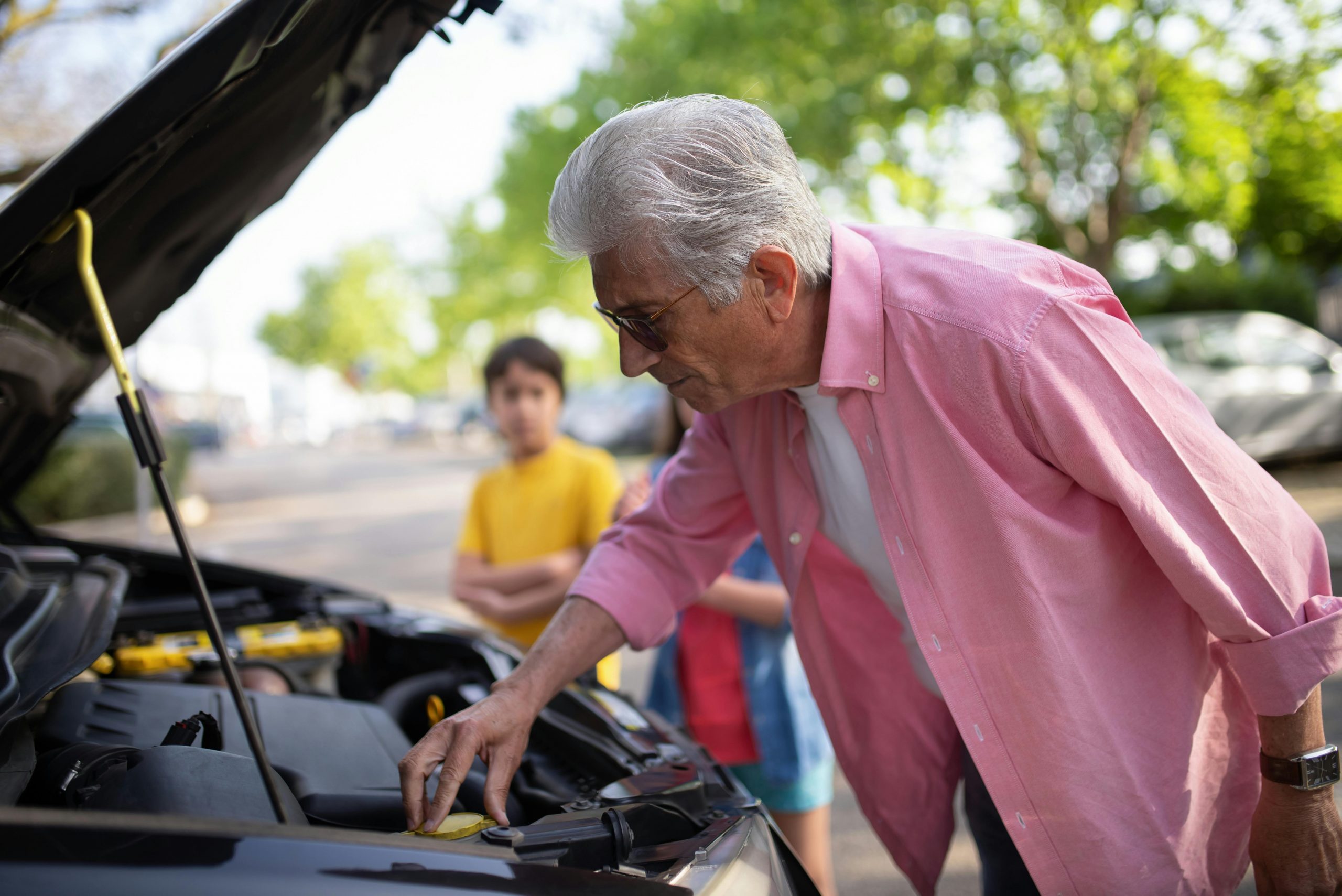Every professional mechanic knows that success on the job depends not only on skill but also on having the right tools within reach. From tackling complex engine issues to performing precision tasks like installing car audio or tinting windows, a well-stocked toolbox is essential. Essential tools provide efficiency, safety, and consistency, ensuring that every job is done correctly the first time. Whether working in a busy brake shop, an auto collision repair facility, or a small garage, the right equipment saves time, reduces frustration, and improves the quality of service provided to clients.
Mechanics face a wide variety of challenges daily, each requiring specialized tools and expertise. For instance, repairing transmissions demands precision instruments to ensure gears align correctly, while car window replacements require careful handling to prevent damage. Even seemingly straightforward tasks like carpet cleaning or rust proofing benefit from the proper equipment to achieve professional results. Beyond these technical necessities, mechanics also benefit from tools that make physically demanding tasks safer, whether towing vehicles, welding components, or performing auto window tint applications. Having access to these tools transforms a mechanic’s workspace into a highly functional, versatile environment capable of handling almost any automotive job.
Additionally, the evolving automotive industry means mechanics must adapt to new technologies and customer expectations. Modern vehicles often combine electronics with traditional mechanical systems, requiring tools for car audio installers or auto window tint applications alongside classic mechanical instruments. Investing in training, such as welding class training, and maintaining a set of high-quality tools for auto collision repairs or brake shop operations ensures mechanics remain competitive in the field. Safety is also paramount; tools designed to protect against rust or to tow vehicles safely not only preserve vehicle integrity but also reduce risk to the mechanic. By understanding the essential tools needed for each type of job, mechanics can work more efficiently, maintain high-quality standards, and deliver reliable service to every client.
In this guide, we will explore the essential tools every mechanic should have on hand, organized by specialty areas. From installing car audio to repairing transmissions, replacing car windows, performing carpet cleaning, fixing brakes safely, tinting auto windows, training in welding, repairing collisions, towing vehicles safely, and protecting cars against rust, each section will highlight tools that are indispensable for professional work. This comprehensive overview aims to equip mechanics with the knowledge to optimize their toolkits and ensure readiness for any challenge. By the end of this article, readers will understand why each tool is vital and how it contributes to efficient, safe, and high-quality automotive service.
Install Car Audio
Mechanics and technicians who specialize in car audio installations require a unique set of tools to ensure sound systems are installed efficiently and correctly. Essential items include wire strippers, crimping tools, panel removal tools, and multimeters to test electrical connections. Precision tools not only make installation faster but also protect the vehicle’s interior and wiring from damage. Without the right equipment, even a simple stereo upgrade can become time-consuming and prone to errors, which can frustrate both the installer and the customer.
For a car audio installer, having tools that allow for safe handling of delicate electronics is critical. For example, a high-quality crimping tool ensures secure wire connections, while a multimeter verifies voltage and continuity, preventing costly mistakes. Panel removal tools help avoid scratches or dents when accessing the car’s internal wiring. Specialized screwdrivers and torque wrenches provide the precision needed to secure speakers and components properly. With the right toolkit, a mechanic can complete installations quickly, safely, and with professional results, satisfying even the most discerning clients.
Repair Transmissions

Transmission repair is one of the most technical and demanding areas in automotive work, requiring mechanics to have the proper set of tools to diagnose and fix issues accurately. From socket sets to torque wrenches, transmission jacks, and fluid pumps, each tool plays a role in ensuring the drivetrain functions smoothly. Precision is critical because even minor misalignments or incorrect torque settings can lead to further damage, costly repairs, or unsafe vehicle operation.
Mechanics who specialize in transmissions often rely on diagnostic tools to identify worn components, broken gears, or fluid leaks before beginning repairs. Transmission jacks allow safe lifting of heavy assemblies, while specialized hand tools enable careful disassembly and reassembly of gear systems. Tools for measuring clearances, such as feeler gauges, are also essential for checking tolerances and ensuring components operate correctly. By equipping themselves with these tools, mechanics can handle complex repairs efficiently while maintaining high standards of quality and reliability.
Replace Car Windows
Replacing car windows requires more than just glass; it demands a set of tools designed to handle delicate materials and precise alignment. Mechanics need suction cups, trim removal tools, glass knives, and sealant applicators to complete installations safely and efficiently. Proper tools protect both the vehicle’s interior and the new window, ensuring a smooth, leak-free finish.
For car window replacements, suction cups allow mechanics to lift and position glass with control, while specialized knives and blades cut away old adhesive without damaging the frame. Trim tools help remove interior panels cleanly, and sealant guns ensure proper sealing of the new window. With these tools, a mechanic can replace windows with minimal risk of damage, providing customers with both safety and aesthetic quality.
Clean Auto Carpets

Clean auto carpets contribute to a vehicle’s overall appearance and hygiene, but achieving professional results requires the right equipment. Mechanics and detailers need extraction machines, brushes, vacuums, and specialized cleaning solutions to remove dirt, stains, and odors effectively. Without proper tools, deep cleaning becomes difficult and time-consuming, reducing efficiency and quality.
For carpet cleaning, professional-grade extraction machines remove dirt embedded deep within fibers, while brushes loosen stubborn debris without damaging the material. Specialized cleaning solutions break down stains, and high-powered vacuums ensure thorough removal of moisture and residues. Using these tools, mechanics can restore carpets to a like-new condition, enhancing both vehicle appearance and customer satisfaction.
Fix Brakes Safely

Brake repair is a critical aspect of vehicle safety, and every brake shop relies on a set of specialized tools to perform inspections, maintenance, and replacements. Mechanics need brake caliper tools, torque wrenches, brake bleeders, and diagnostic devices to ensure braking systems function optimally. Precision and safety are essential, as faulty brakes can lead to accidents and legal liabilities.
In a brake shop, mechanics use caliper compression tools to properly seat brake pads, while torque wrenches ensure bolts are tightened to manufacturer specifications. Brake bleeders remove air from hydraulic systems, ensuring smooth pedal response. Diagnostic devices detect uneven wear, fluid leaks, and other issues before they compromise safety. Equipped with these tools, a mechanic can maintain braking systems efficiently, giving drivers confidence in their vehicle’s stopping power.
Tint Auto Windows
Applying auto window tint enhances vehicle appearance and provides protection from UV rays, but proper installation requires the right tools. Mechanics rely on squeegees, heat guns, knives, and measuring tools to apply film evenly without bubbles or creases. Using specialized tools ensures a professional finish and prevents damage to both the tint and the vehicle.
For auto window tint, precision cutting tools allow the film to match window dimensions perfectly. Heat guns help contour the tint to curved surfaces, while squeegees remove air pockets for a smooth finish. Measuring devices ensure symmetry and alignment, critical for aesthetic quality. With these tools, mechanics can deliver professional results that protect interiors, improve comfort, and enhance vehicle style.
Train in Welding

Welding is an essential skill for many automotive repairs, including chassis reinforcement, exhaust work, and collision repairs. Mechanics undergoing welding class training must become familiar with welders, clamps, protective gear, and measuring instruments. The right tools and training provide both skill development and safety knowledge, enabling mechanics to perform precise and secure welds.
During welding class training, students learn to use MIG, TIG, and stick welders, alongside tools like clamps and jigs to hold components steady. Protective gear such as gloves, helmets, and aprons prevent injury from sparks and heat. Measuring tools ensure accurate alignment and proper welding angles. This combination of equipment and education prepares mechanics to perform structural repairs safely and effectively, expanding their capabilities across automotive tasks.
Repair Collisions
Auto collision repairs require a mix of diagnostic and mechanical tools to restore vehicles to pre-accident condition. Mechanics need frame straightening machines, body hammers, dollies, welders, and sanding tools to repair structural and cosmetic damage. Proper equipment ensures repairs meet safety standards and provide a visually seamless finish.
For auto collision repairs, frame machines align vehicles after impacts, while hammers and dollies correct dents and deformations. Welders join structural components, and sanding tools prepare surfaces for paint. Specialized measuring tools verify alignment and geometry, ensuring structural integrity. Equipped with these tools, mechanics can return vehicles to safe, roadworthy condition while maintaining appearance and customer satisfaction.
Tow Vehicles Safely
Towing vehicles safely requires specialized equipment designed to prevent further damage to the vehicle and ensure operator safety. Mechanics and drivers need tow trucks, wheel lifts, chains, straps, and safety lights to handle vehicles of various sizes and conditions. Proper tools make towing efficient, protecting both the vehicle and the surrounding environment.
In towing services, wheel lifts secure vehicles without causing tire or suspension damage, while chains and straps ensure stable transport. Safety lights and reflective gear protect drivers during roadside operations. Some tow trucks include winches for recovering vehicles from difficult locations. By equipping themselves with the right tools, mechanics and towing operators provide reliable, damage-free transport every time.
Protect Against Rust
Rust proofing is an essential preventive measure that extends vehicle lifespan and preserves aesthetics. Mechanics rely on sprays, undercoating tools, wire brushes, and cleaning equipment to treat vulnerable areas effectively. Proper rust proofing protects critical components, reducing repair costs and maintaining safety.
For rust proofing, wire brushes remove corrosion before applying protective coatings, while spray guns distribute treatments evenly. Undercoating tools shield the undercarriage from moisture, road salt, and debris. By using these tools, mechanics can prevent rust from spreading, preserve vehicle value, and improve long-term durability. Rust proofing is not only a maintenance task but a vital step in ensuring vehicles remain safe and reliable for years to come.
Having the right tools on hand is fundamental to every mechanic’s success, regardless of specialty. From installing car audio systems to repairing transmissions, replacing car windows, and performing carpet cleaning, each task requires dedicated equipment to ensure efficiency, accuracy, and safety. A well-equipped mechanic can operate confidently in a brake shop, handle auto window tint applications, and even perform welding tasks with proper training, all while delivering professional results. These tools are not just conveniences—they are essential investments that allow mechanics to provide high-quality service consistently.
In addition, mechanics who perform auto collision repairs or towing services understand that specialized tools protect both vehicles and operators. Frame machines, hammers, and tow equipment minimize the risk of further damage, ensuring vehicles return to clients safely. Preventive tools like rust proofing equipment also extend the life of vehicles, reducing maintenance costs and increasing customer satisfaction. Whether a mechanic is a seasoned professional or an apprentice completing welding class training, having the right tools ensures readiness for any challenge.
Ultimately, the tools a mechanic keeps on hand define the quality, speed, and safety of their work. From auto window replacements and tinting to brake maintenance, carpet cleaning, and transmission repairs, each tool has a distinct role in maintaining vehicles efficiently. By investing in a comprehensive set of essential tools, mechanics can operate at peak performance, build client trust, and stay competitive in an evolving automotive landscape. Safety, precision, and professional quality all depend on proper preparation and access to the right equipment.
A mechanic’s toolbox is more than just a collection of instruments—it is the foundation of their craft. Tools for car audio installation, auto window tint, towing services, and rust proofing empower mechanics to handle nearly any situation with confidence and skill. By understanding the importance of each tool and how it contributes to specific tasks, mechanics can optimize their workflow, improve service quality, and ensure every vehicle leaves the shop in the best possible condition. Mastery of these essential tools allows mechanics to excel across a wide range of automotive tasks, providing safety, efficiency, and satisfaction for every client they serve.




